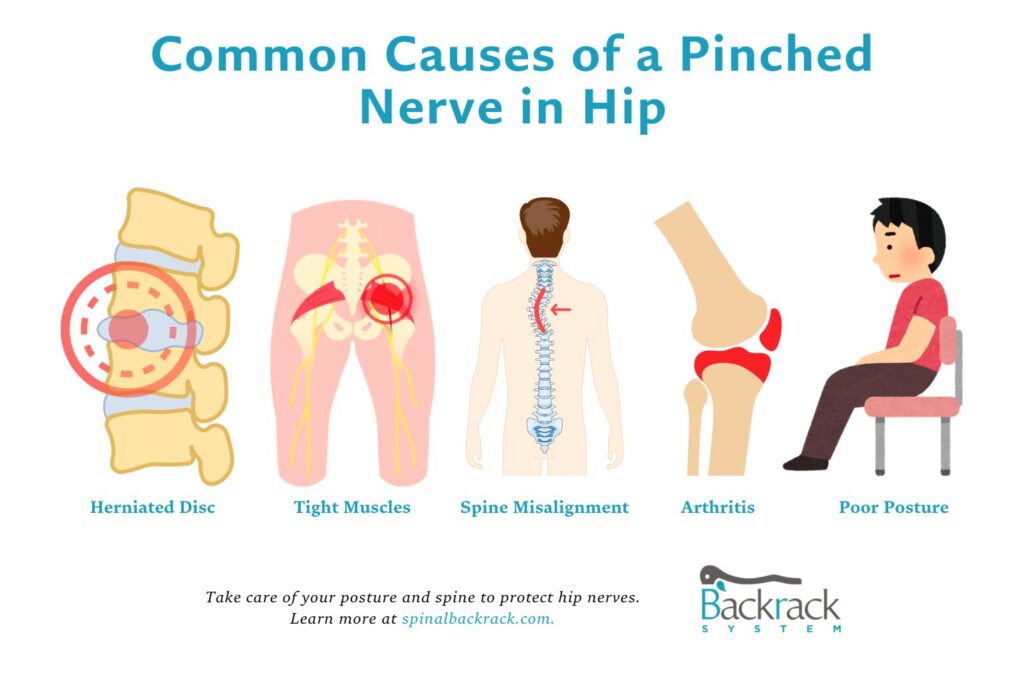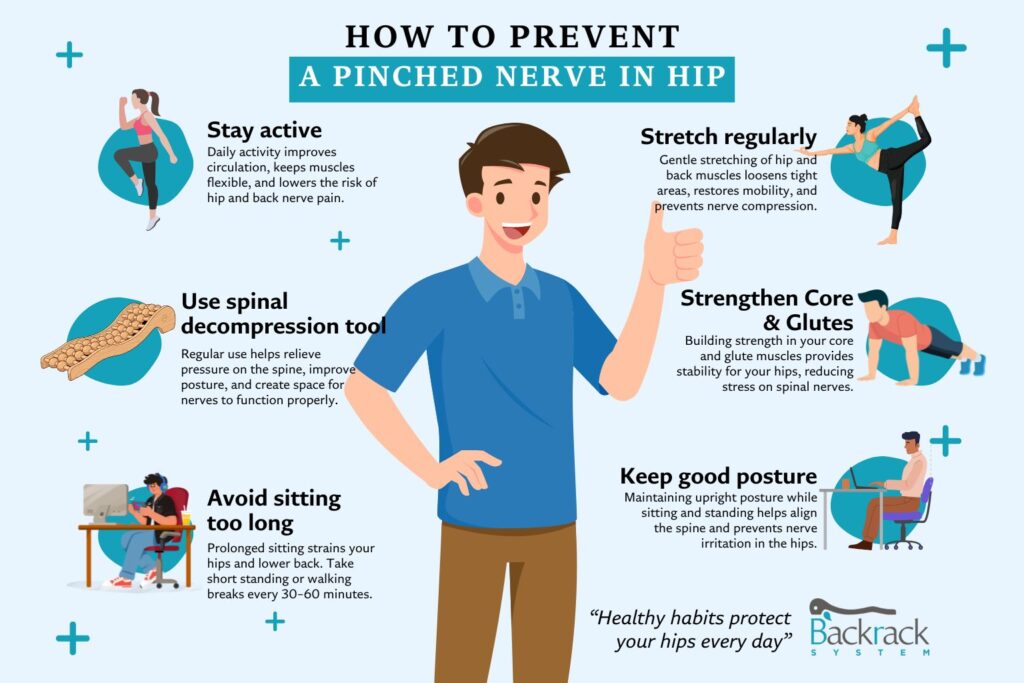
A pinched nerve in hip pain can make daily movement hard. Whether it shows up as sharp pain when you walk or numbness when you sit, this kind of nerve problem can seriously affect your day-to-day life.
This article explains what causes a pinched nerve in the hip, how to know if you have it, and what natural, non-invasive treatment options you can try at home. If you’re looking for relief without relying on pills, injections, or surgery, you’re in the right place.
A pinched nerve in the hip happens when something puts pressure on a nerve near your hip joint. This pressure can come from a tight muscle, swollen tissue, a bulging disc in your spine, or even a misaligned joint.
When the nerve is squeezed, it can’t send signals properly. That’s what causes the pain, tingling, or weakness you may feel in your hip, lower back, or leg.

There are several reasons why a pinched nerve in the hip might happen. Here are the most common:
The soft cushion between your spine bones can slip out of place and press on a nearby nerve, often leading to hip or leg pain.
The piriformis is a tiny muscle deep in the buttocks.. If it tightens up, it can squeeze the sciatic nerve.
When your spine or pelvis shifts out of its natural position, it can pinch the nerves running through that area.
Inflammation in the joints can narrow the space where nerves pass, causing irritation or pressure.
Long periods of sitting with bad posture can cause muscles to tighten and nerves to become compressed.
These symptoms often show up when a nerve is irritated or compressed near your hip:
If these symptoms stay around for more than a few days or keep coming back, you could be dealing with a pinched nerve in the hip.
You don’t need to jump straight to surgery or prescription painkillers. Many people find real relief using natural, non-invasive methods at home.
Here’s what works:
One of the best ways to ease a pinched nerve in hip is by relieving pressure on the spine. The Spinal Backrack is a non-invasive device that helps decompress your spine naturally.
It works by gently stretching your spine, improving alignment, and reducing nerve pressure. Regular use can improve posture, reduce muscle tension, and support long-term back health.
It’s also a cost-saving option. Instead of weekly therapy visits, you get daily relief at home with one tool designed by spine specialists.
Tight muscles are a common cause of a pinched nerve. Daily stretching can help open up the space around your hip and relieve pressure.
Useful stretches include:
Stretch slowly and never push into pain. With regular use, these movements help restore balance and mobility.
Weak core and glute muscles can cause instability in your lower body. That instability puts more stress on your spine and hips.
Try these exercises:
These build strength around the hip and lower back, helping reduce the risk of another pinched nerve in hip.
Poor sitting or standing posture is a big contributor to hip nerve pain. Over time, bad posture pulls your spine and hips out of alignment.
To fix it:
Better posture reduces the chance of your nerves getting trapped again.
Massaging tight muscles around the hip can help them relax. Foam rolling your lower back, glutes, and thighs also improves blood flow and breaks up tension.
This helps create space for your nerves to move freely again, which can reduce the pain.
Both cold and heat therapy can help:
Use each for 15–20 minutes at a time, with a cloth barrier to protect your skin.
If you’ve tried natural treatments for a few weeks and the pain hasn’t improved, it’s a good idea to get checked. See a doctor if you have:
These signs could mean your hip needs medical attention, especially if spinal nerve roots are involved.
Once the pain is gone, it’s worth making small changes to keep it that way.
Here’s how:
Taking small steps every day helps protect your body and lower your chances of future nerve pain.

This doesn’t mean you need surgery or expensive treatments. Many people manage it with simple, natural tools and changes to their daily routine.
Using a spine-focused solution like the Spinal Backrack, stretching your hips and back, and improving your posture can lead to real, lasting relief. These methods don’t just treat symptoms, they help correct the cause.
If you’re dealing with nagging hip pain or nerve issues, start with one change today. Your body responds when you give it the right support.






Sign up our newsletter to get article update about backrack therapy.